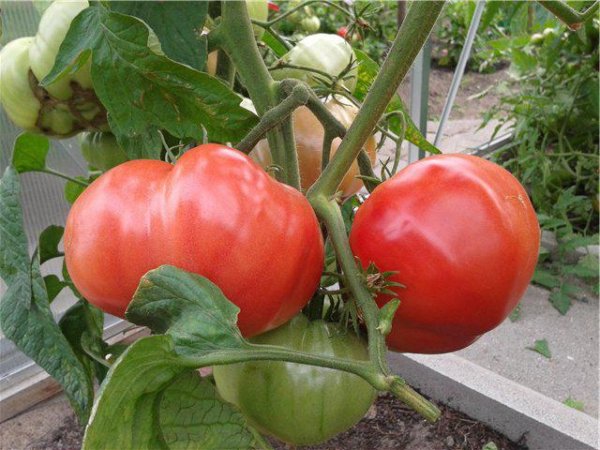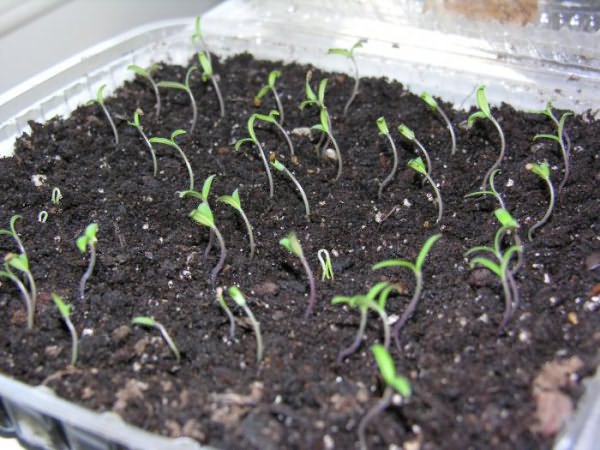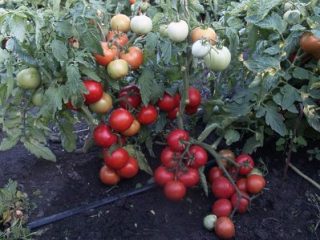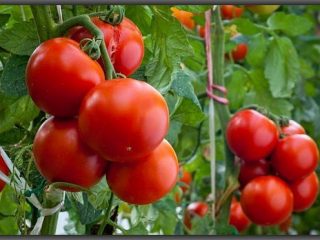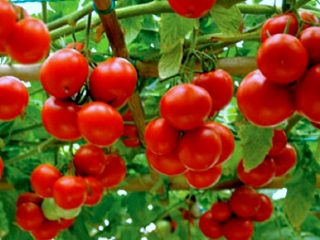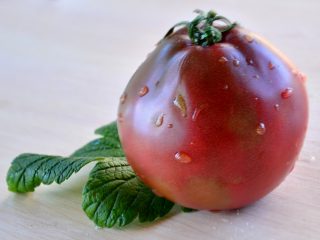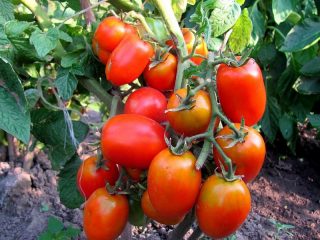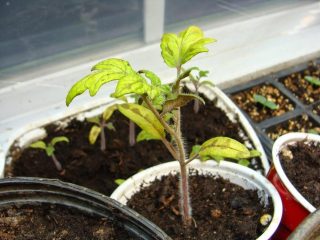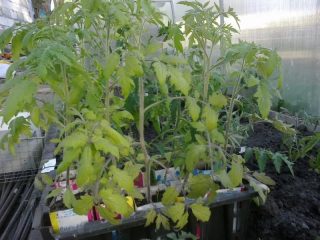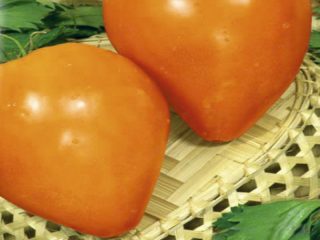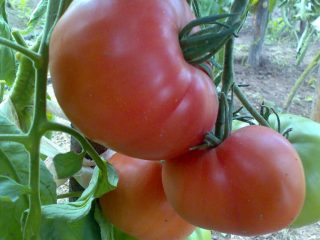Content
The Raspberry Elephant tomato is a mid-early variety of universal use, which is suitable for both fresh consumption and canning for the winter. The variety is recommended for cultivation in open ground and greenhouses, and the yield indicators are approximately the same in both cases.
Detailed description of the variety
Raspberry elephant tomatoes are classified as determinate varieties. This means that fruiting and plant growth are practically unlimited - the bushes continuously form young shoots, stretching to an average of 1.5 m in height, in open ground. In greenhouse conditions, the height of tomatoes can reach 2 m.
The shape of the leaves depends on the manufacturer. For example, the seeds of the Aelita agricultural company produce tomatoes, the leaf blade of which resembles a potato leaf in appearance. Tomatoes with ordinary leaves grow from planting material from the Gavrish company.
One bunch produces from 5 to 7 tomatoes. Since the fruits are quite heavy, the shoots can bend under them and even break. To prevent this from happening, 1-2 ovaries are usually removed, thereby lightening the overall weight of the hand.
Description and taste of fruits
The name of the Raspberry Elephant tomato variety is based on the large size of the fruits of this variety. The weight of tomatoes varies on average from 300 to 600 g. Some reviews report that tomatoes can even grow in greenhouse conditions up to a record 800 g with proper care of the beds.
According to the description, Raspberry Elephant tomatoes are round in shape, but slightly flattened on top, as can be seen in the photo below. The color of ripened fruits is red-crimson, rich.
The skin of tomatoes is thin, barely noticeable. This feature allows tomatoes to safely tolerate low temperatures and ripen in low light conditions, however, such lightness becomes a disadvantage if the variety is grown for sale - the fruits do not tolerate transportation over long distances, they wrinkle, crack and do not retain their presentation for long. That is why they try to process the harvest as quickly as possible, using tomatoes to make pastes, sauces and juices.
Particularly noteworthy is the soft structure of the fruit pulp and harmonious taste - moderately sweet, sugary, without pronounced sourness. Each fruit contains from 6 to 8 chambers.
Characteristics of Raspberry Elephant tomatoes
Tomatoes of the Raspberry Elephant variety are classified as mid-season varieties - its fruits fully ripen within 110-120 days from the moment the seeds are sown for seedlings. In regions with a warm climate, tomatoes are planted in open ground, while in the north of the country it is preferable to plant them in greenhouses.It is also quite common to grow the variety under film covers, since the large size of the bushes makes them vulnerable to strong winds. The yield of Raspberry elephant tomatoes is 5-6.5 kg per bush. If you regularly feed the plantings, this figure can be increased to 7 kg of fruits per plant.
The Raspberry elephant tomato is resistant to most tomato diseases, however, this does not mean that the bushes do not need to be treated against fungus and other infections. Blossom rot is a particular danger to the variety. Early addition of lime flour to the soil helps reduce the risk of disease. Tomatoes are also sprayed with fungicides for preventive purposes.
The Crimson Elephant variety rarely attracts pests. If the beds are damaged by insects, the tomatoes are treated with any non-toxic insecticide.
Pros and cons of the variety
Based on numerous reviews from summer residents, we can highlight the following advantages of Raspberry Elephant tomatoes:
- variety resistance to most tomato diseases;
- high yield rates;
- attractive appearance;
- pleasant sugary taste of the fruit;
- resistance to long periods of heat;
- immunity to light deficiency;
- simultaneous ripening of fruits.
The disadvantages of the variety include:
- poor transportability due to the fact that the skin is too thin;
- low frost resistance;
- the need for quick processing of the crop - the fruits do not last long;
- demands on regularity of watering;
- vulnerability to sudden changes in temperature.
Rules for planting and care
Raspberry elephant tomatoes are grown all over Russia, however, there are quite strict requirements regarding planting features.Tomatoes can be planted in open ground only in the south of the country, while in the Northern regions and in the middle zone, growing the variety is possible only in greenhouses and hotbeds using the seedling method. These designs are not available on every farm, so the variety is not so widespread, despite all its positive qualities.
Growing seedlings
Tomatoes of the Raspberry Elephant variety are grown mainly through seedlings. This is done according to the following scheme:
- The first step is preparing the container for the seedlings. For this, special plastic containers or wooden boxes are used. They are put in a warm, dry place.
- Next, you need to prepare a soil mixture from fertile soil and humus. If desired, soil for seedlings can be purchased at a gardening store.
- The soil is poured into containers and several furrows with a depth of no more than 2 cm are formed on the soil surface. The distance between the rows is 2-3 cm.
- Seeds are sown at the bottom of the resulting furrow, after which they are lightly sprinkled with earth.
- Then the planting material is watered moderately so as not to wash it away.
- The container is covered with glass or plastic film to increase the air humidity inside.
- When the first shoots appear, which happens about a week after sowing the seeds, the shelter is removed.
- With the formation of 3 full-fledged leaves, the tomatoes are dived into separate containers. This must be done before the seedlings form a developed root system.
- Before planting tomatoes in open ground, they must be hardened off. To do this, they begin to take the container with seedlings outside, gradually increasing the time the tomatoes spend in the fresh air.
Before transplanting into open ground, planting material is watered daily.Fertilizing is carried out no more than 2 times a month, and only solutions can be used. Fertilizers cannot be applied in dry form.
Transplanting seedlings
Tomatoes of the Raspberry Elephant variety are transplanted into open ground when the temperature outside is stable and the threat of return frosts has passed. The procedure for planting tomatoes is as follows:
- Dig holes about 20-25 cm deep, focusing on the size of the root system of the seedlings.
- Rotted manure or humus is poured into the bottom of the holes.
- After this, the containers with tomatoes are dipped into the mullein solution. When the earthen lump is saturated with fertilizer, the seedling is removed from the container and placed in the hole.
- The tomatoes are lightly sprinkled with soil and watered moderately. The top layer of soil is not compacted too much and watered again.
Tomato care
Caring for Raspberry Elephant tomatoes involves basic procedures:
- timely loosening of the soil;
- weeding;
- regular watering;
- fertilizing plantings.
Form the bushes into one stem, otherwise the tomatoes will turn out to be small. To do this, you need to carefully monitor new stepsons and remove them in a timely manner. Otherwise, all the plant’s energy will be spent on intensive shoot formation and green mass gain.
Tomatoes of the Raspberry Elephant variety are moisture-loving plants, so the beds are watered frequently, at least once every 5 days. At the same time, you should not overwater the tomatoes, so as not to cause stagnation of moisture in the soil. Excess water in the soil provokes the development of late blight.If the variety is grown in a greenhouse, then it must be regularly ventilated, otherwise the air humidity will become excessive, which will not benefit the plantings.
Tomato responds well to fertilizing. Fertilizers are applied at intervals of 10-12 days, and it is better to use organic fertilizers. A manure solution is suitable for these purposes - 1 bucket of fertilizer per 100 liters of water. For each tomato bush, use 2 to 3 liters of solution. In early July, nitrogen fertilizing is limited.
Conclusion
The Raspberry Elephant tomato is one of the best salad varieties. It is relatively unpretentious in care and resistant to many diseases, however, in most of the country it can only be grown in greenhouses, which not every summer resident has available. This limitation leaves an imprint on the prevalence of the variety in Russia.
You can learn more about the appearance and weight of Raspberry Elephant tomatoes from the video below:
